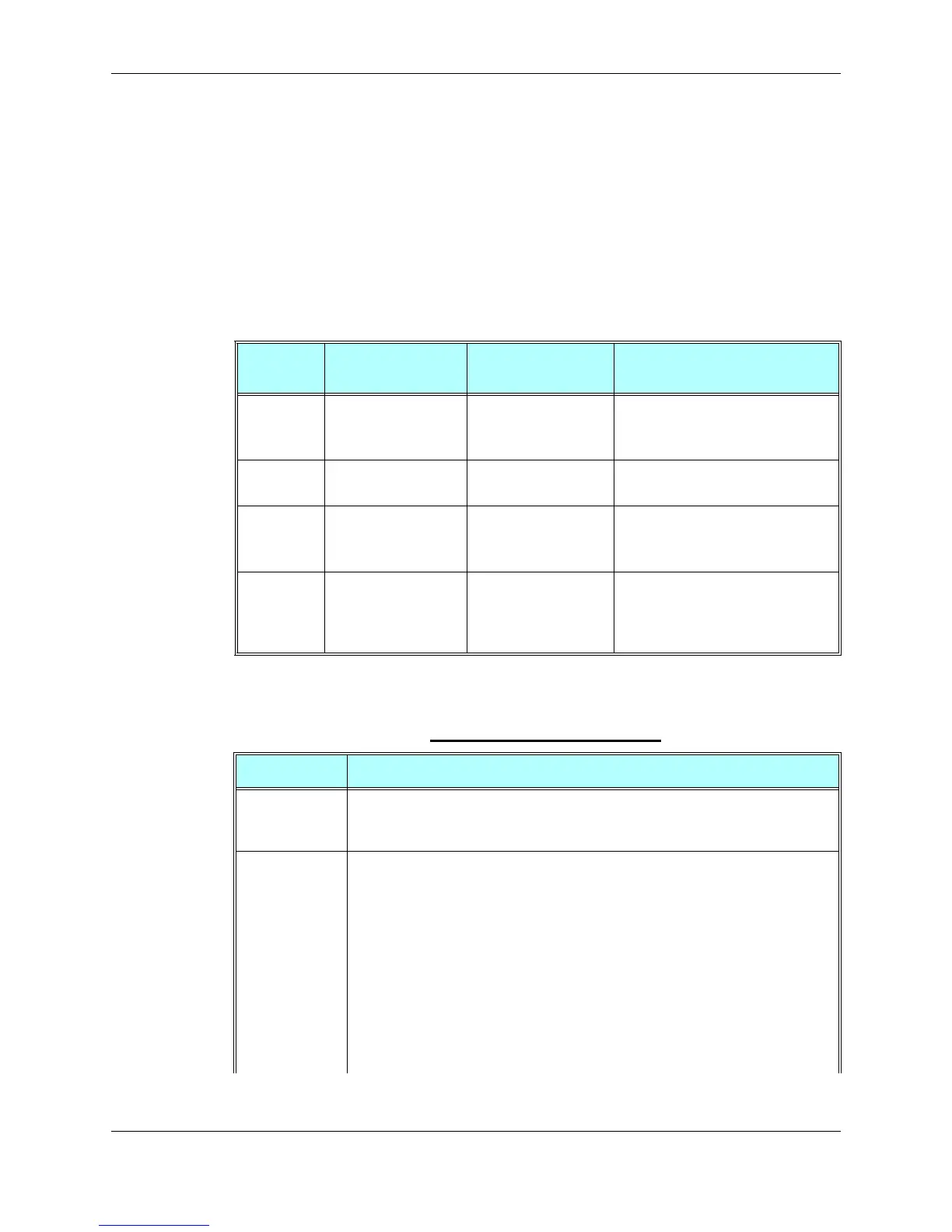Chapter 3: AT Commands Reference
December 31, 2007 AT Commands Reference Manual 3-65
+CUSD, Unstructured Supplementary Service Data
This command allows control of Unstructured Supplementary Service Data (USSD), according to
GSM 02.90.
Both network and mobile initiated operations are supported. Parameter <n> is used to
disable/enable the presentation of an unsolicited result code (USSD response from the network,
or network initiated operation) +CUSD: <m>[,<str>,<dcs>] to the TE. In addition, value <n>=2
is used to cancel an ongoing USSD session. When <str> is given, a mobile initiated USSD-string
or a response USSD-string to a network initiated operation is sent to the network. The response
USSD-string from the network is returned in a subsequent unsolicited +CUSD result code.
The following table shows the +CUSD parameters.
Command
Type
Syntax Response/Action Remarks
Set
AT+CUSD=[<n>[,<str
>[,<dcs>]]]
OK
or:
+CME ERROR: <err>
The Set command enables/disables the
display of the unsolicited result code.
Unsolicited
Report
+CUSD:
<m>[,<str>[,<dsc>]]]
The USSD response from the network.
Read
+CUSD? +CUSD: <n>
or:
+CME ERROR: <err>
The Read command displays the
current value of <n>.
Test
+CUSD=? +CUSD: (list of
supported <n>s)
or:
+CME ERROR: <err>
The Test command displays the
supported values of <n>.
Table 3-34: +CUSD Parameters
<Parameter> Description
<n> 0 Disable the result code presentation in the TA.
1 Enable the result code presentation in the TA.
2 Cancel session (not applicable to read command response).
<str> String type USSD-string (when <str> parameter is not given, network is not
interrogated):
If <dcs> indicates that GSM 03.38 [25] default alphabet is used:
• If TE character set other than "HEX" (refer command Select TE Character Set
+CSCS): ME/TA converts GSM alphabet into current TE character set according to
rules of GSM 07.05 [24] Annex A.
• If TE character set is "HEX": ME/TA converts each 7-bit character of GSM
alphabet into two IRA character long hexadecimal number (e.g. character ? (GSM
23) is presented as 17 (IRA 49 and 55)).
If <dcs> indicates that 8-bit data coding scheme is used: ME/TA converts each 8-bit
octet into two IRA character long hexadecimal number (e.g. octet with integer value
42 is presented to TE as two characters 2A (IRA 50 and 65)).

